Brief
Oct 15 2017
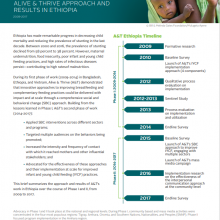
Improving infant and young child feeding practices at scale: Alive & Thrive approach and results in Ethiopia - 2009-2017
Ethiopia has made remarkable progress in decreasing child mortality and reducing the prevalence of stunting in the last decade. Between 2000 and 2016, the prevalence of stunting declined from 58 percent to 38 percent.
Toolkit
Oct 01 2017
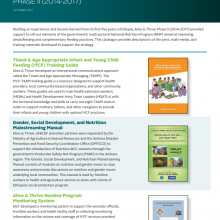
Alive & Thrive Ethiopia multimedia and training catalogue
Building on experiences and lessons learned from its first five years in Ethiopia, Alive & Thrive Phase II (2014-2017) provided support to roll out elements of the government’s multi-sectoral National Nutrition Program (NNP) aimed at improving breastfeeding and complementary feeding practices
Brief
Oct 01 2017
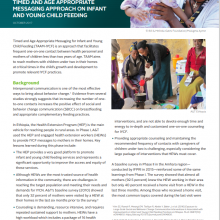
Timed and age appropriate messaging approach on infant and young child feeding
Timed and Age Appropriate Messaging for Infant and Young Child Feeding (TAAM-IYCF) is an approach that facilitates frequent one-on-one contact between health personnel and mothers of children less than two years of age.
Journal article
Oct 18 2016
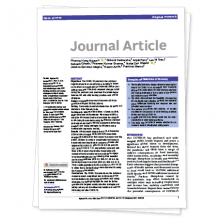
Exposure to large-scale social and behavior change communication interventions is associated with improvements in infant and young child feeding practices in Ethiopia (Kim SS., 2016. PLOS One)
The Alive & Thrive (A&T) initiative aimed to improve infant and young child feeding (IYCF) practices in Ethiopia through large-scale implementation of social and behavior change communication interventions in four regions of Ethiopia.
Brief
May 23 2016
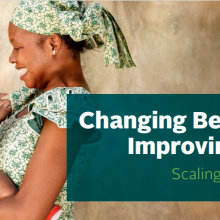
Alive & Thrive: Changing behaviors, improving lives
Describes the Alive & Thrive initiative by outlining how and why we began, what we’ve achieved and how we’ve evolved today. Also illustrates the four component framework that we use to scale up nutrition.
Journal article
Jan 11 2016

Caterpillar cereal as a potential complementary feeding product for infants and young children: nutritional content and acceptability (Bauserman M., 2015. Maternal and Child Nutrition)
Animal-source foods, which prevent micronutrient deficiencies, are not readily available in many parts of the Democratic Republic of Congo (DRC).

